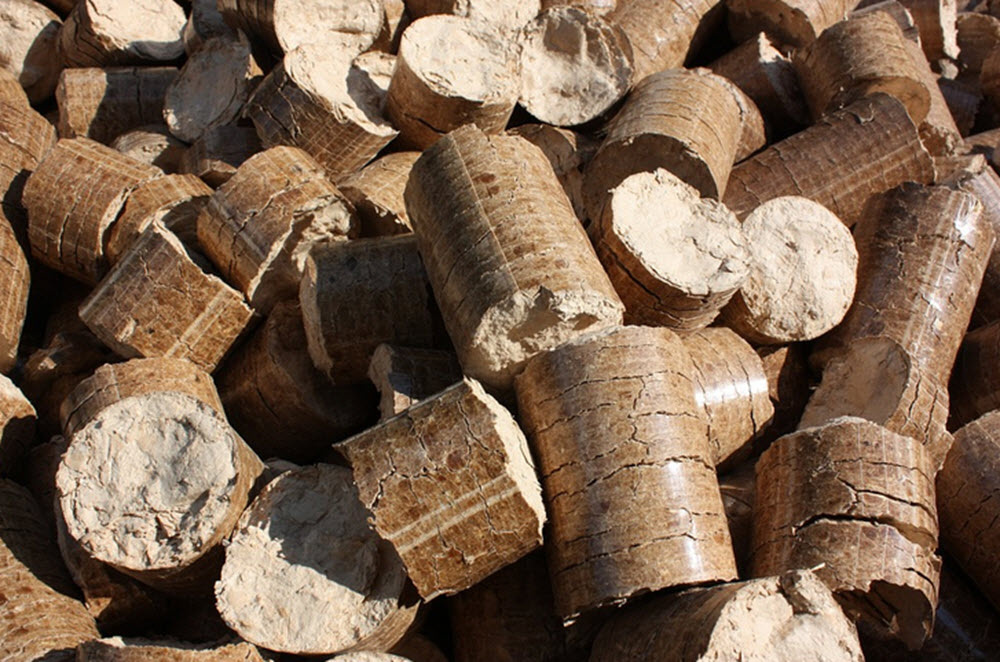Wood pellets are used as fuel for power generation and space heating in both large-scale and residential applications. It is also used for cooking, although that is less common. Since the late 20th century, there has been an increased interest in small and efficient wood pellet stoves for residential use, and a variety of pellet stoves have entered the market – both more conventional stoves and the furnaces intended for modern-era central heating.
Pellet fuel is a type of biofuel made from compressed organic matter or biomass. For wood pellet fuel, wood is used as the raw material for the pellets, typically in the form of sawdust. One advantage of using wood pellets instead of logs or woodchips is  uniformity. Standardized uniform pellets can be used in automatic feeding applications, and the energy output can be accurately calculated in advance. Additionally, the high density of the pellets makes for more efficient transporting and storage.
uniformity. Standardized uniform pellets can be used in automatic feeding applications, and the energy output can be accurately calculated in advance. Additionally, the high density of the pellets makes for more efficient transporting and storage.
According to the International Energy Agency Task 40, the annual wood pellet production more than doubled between 2006 and 2010. By 2010, it had reached 14 million tons. A lot of wood pellet fuel is produced from waste generated by the milling of lumber and the manufacturing of wood products, such as furniture. Treetops, branches and stubs that are unsuitable for lumber production can be turned into sawdust and used to make wood pellet fuel.
Not all wood pellets are identical, and commercial wood pellet fuel is typically categorized and labelled based on factors such as moisture content, ash content, dimensions, and heating value. Pellets can be compressed until they are extremely dense, and it is possible to achieve a moisture content below 10%. A low moisture content increases the efficiency of combustion.
Energy output
For most versions of commercially available wood pellets, the energy content will be somewhere in the range 4.7 – 5.2 Mwh/tonne, which is equal to 14.4-20.3 MJ/kg.
Combustion efficiency
Nowadays, modern high-efficiency wood pellet stoves and boilers are available, and it is fairly easy to find a model where the combustion efficiency exceeds 85%.
Some models achieve an extraordinarily high combustion efficiency by working in condensing mode.
Emissions
Wood pellet combustion will release fine particulate matter into the air, and older pellet stoves tend to emit more than the newer models. One way of reducing emissions into the air is to use particle filters. Large-scale power plants sometimes have electrostatic precipitators, cyclonic separators or baghouse particle filters to reduce PM 2.5 emissions.
Generally speaking, the emissions of NOx, SOx and volatile organic compounds tend to be lower for modern wood pellet stoves and boilers than for many other forms of combustion heating.
Storing wood pellets
It is important to know that wood pellets can emit carbon monoxide during storage. In a room that is not properly ventilated, the air can become very dangerous to breathe for both humans and animals. Carbon monoxide is an odourless, colourless gas, and the symptoms of carbon-monoxide poisoning can be easily mistaken for something else. Examples of common symptoms are general weakness, dizziness, headache, confusion, stomach upset, and vomiting. It can feel similar to being drunk or having the flu. Carbon-monoxide poisoning can lead to unconsciousness and death, and fatal accidents involving wood pellets have occurred.
For more information:
https://www.cdc.gov/co/faqs.htm
https://academic.oup.com/annweh/article/56/7/755/172902
What are “black wood pellets”?
Black wood pellets are made from wood, but looks similar to hard coal. They were developed as a substitute for coal in power plants created for coal burning.

